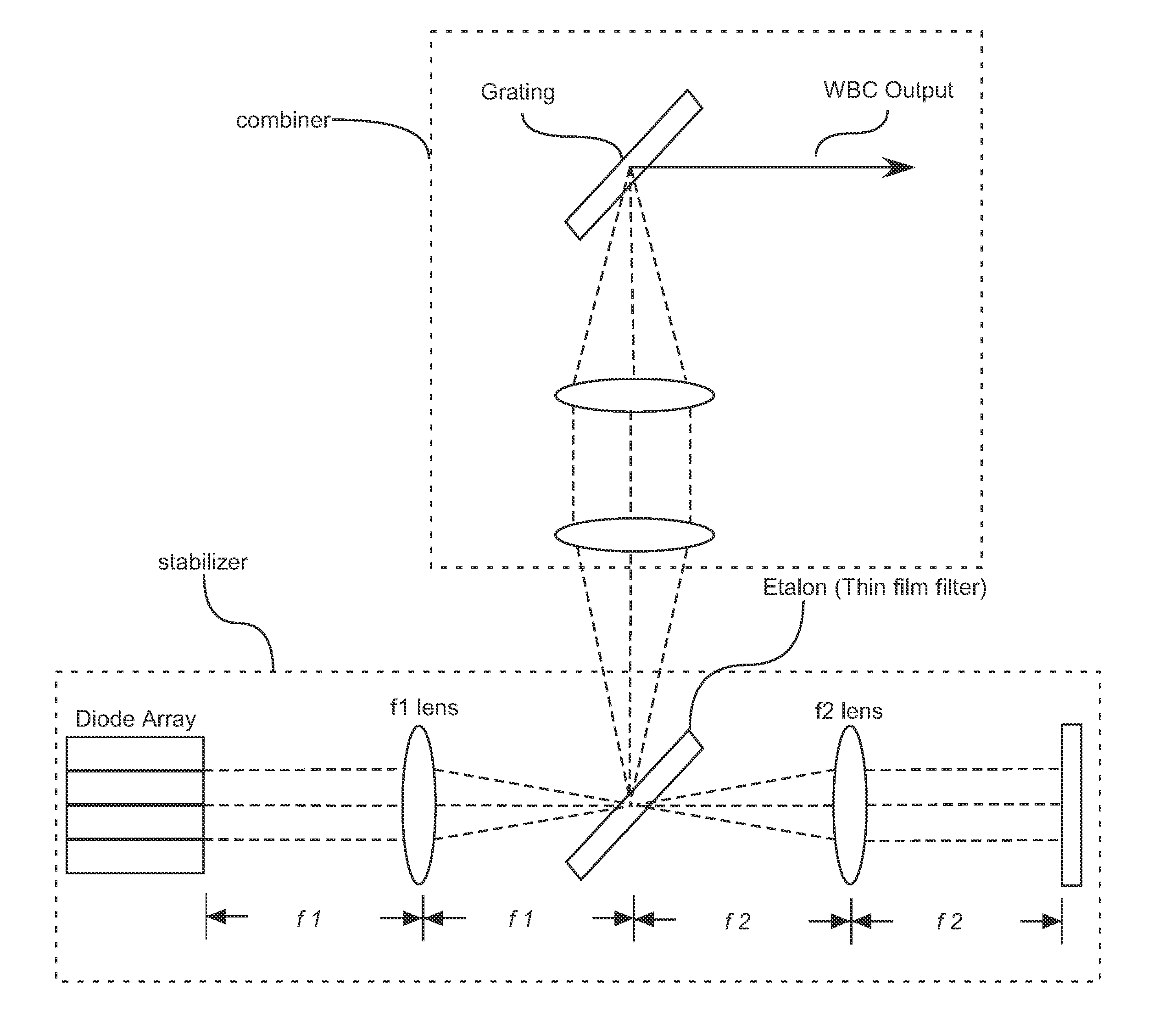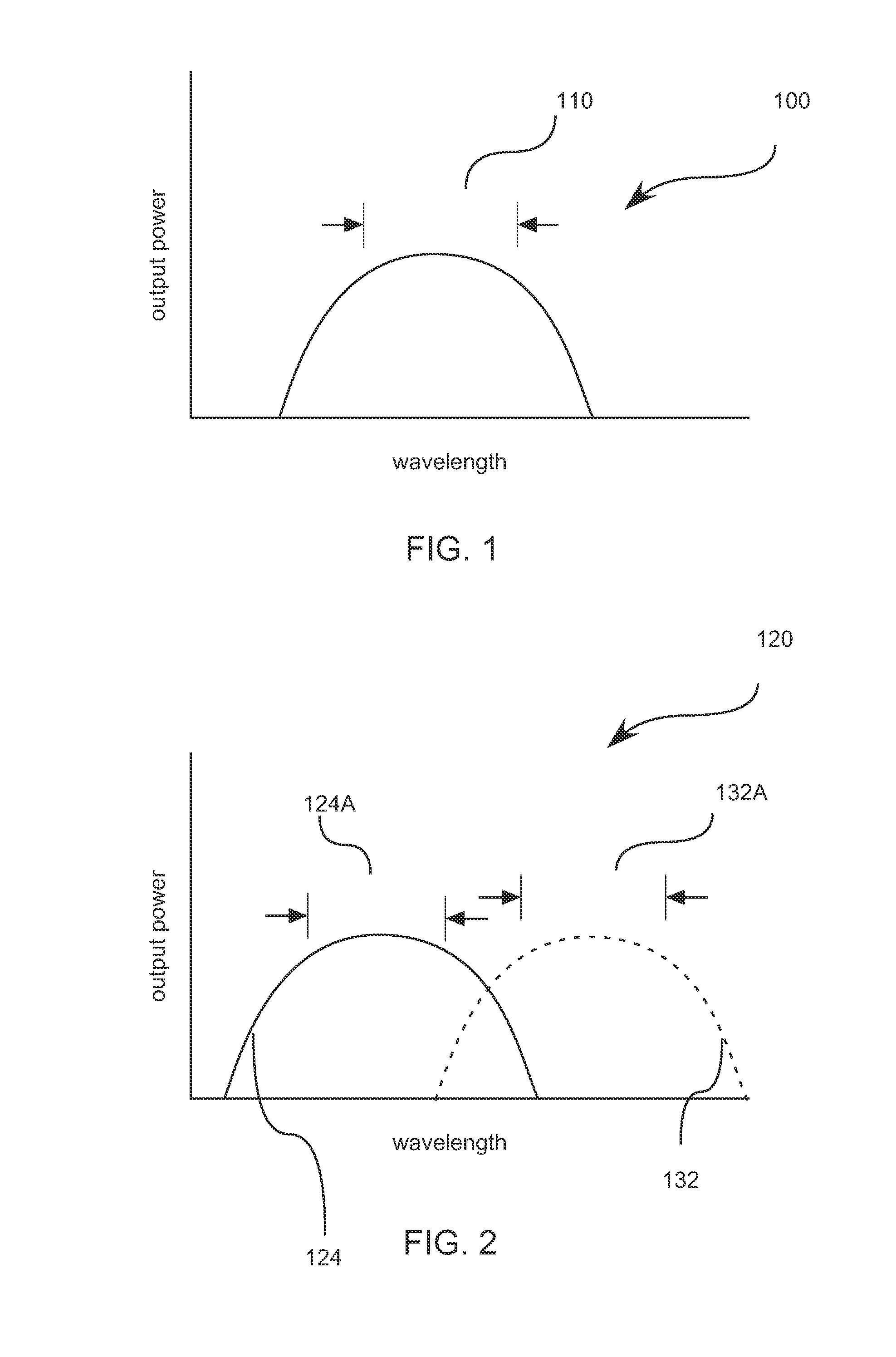Method for Improving Performance of Wavelength Beam Combining Diode Laser Systems
a wavelength beam and laser technology, applied in semiconductor lasers, laser details, laser optical resonator construction, etc., can solve the problems of slow turn-on time of output power of diode emitters operating in wbc systems, slow turn-on time output power of diode emitters if not designed properly, etc., to improve the turn-on time of the system, improve the reflectivity of output couplers, and improve the effect of system performan
- Summary
- Abstract
- Description
- Claims
- Application Information
AI Technical Summary
Benefits of technology
Problems solved by technology
Method used
Image
Examples
Embodiment Construction
[0030]Aspects and embodiments relate generally to the field of creating a fast turn-on time WBC system through 1) pre-determining the optimal positioning of diode emitters, 2) determining an optimal reflectivity for the output coupler, 3) selecting an appropriate simmer current, 4) and selecting an optimal operating junction temperature of the diode emitters.
[0031]For purposes of this application a diode element can refer to a diode bar or diode emitter. A semiconductor gain element can include any electromagnetic beam-generating device, but may or may not be self-resonating. These include quantum cascade lasers (QCL) or elements, vertical cavity surface emitting laser (VCSEL) or elements, diode elements and the like. Generally each emitter is comprised of a back reflective surface, at least one optical gain medium, and a front reflective surface. The optical gain medium refers to increasing the gain of electromagnetic radiation and is not limited to the visual, IR or ultraviolet po...
PUM
 Login to View More
Login to View More Abstract
Description
Claims
Application Information
 Login to View More
Login to View More - R&D
- Intellectual Property
- Life Sciences
- Materials
- Tech Scout
- Unparalleled Data Quality
- Higher Quality Content
- 60% Fewer Hallucinations
Browse by: Latest US Patents, China's latest patents, Technical Efficacy Thesaurus, Application Domain, Technology Topic, Popular Technical Reports.
© 2025 PatSnap. All rights reserved.Legal|Privacy policy|Modern Slavery Act Transparency Statement|Sitemap|About US| Contact US: help@patsnap.com



